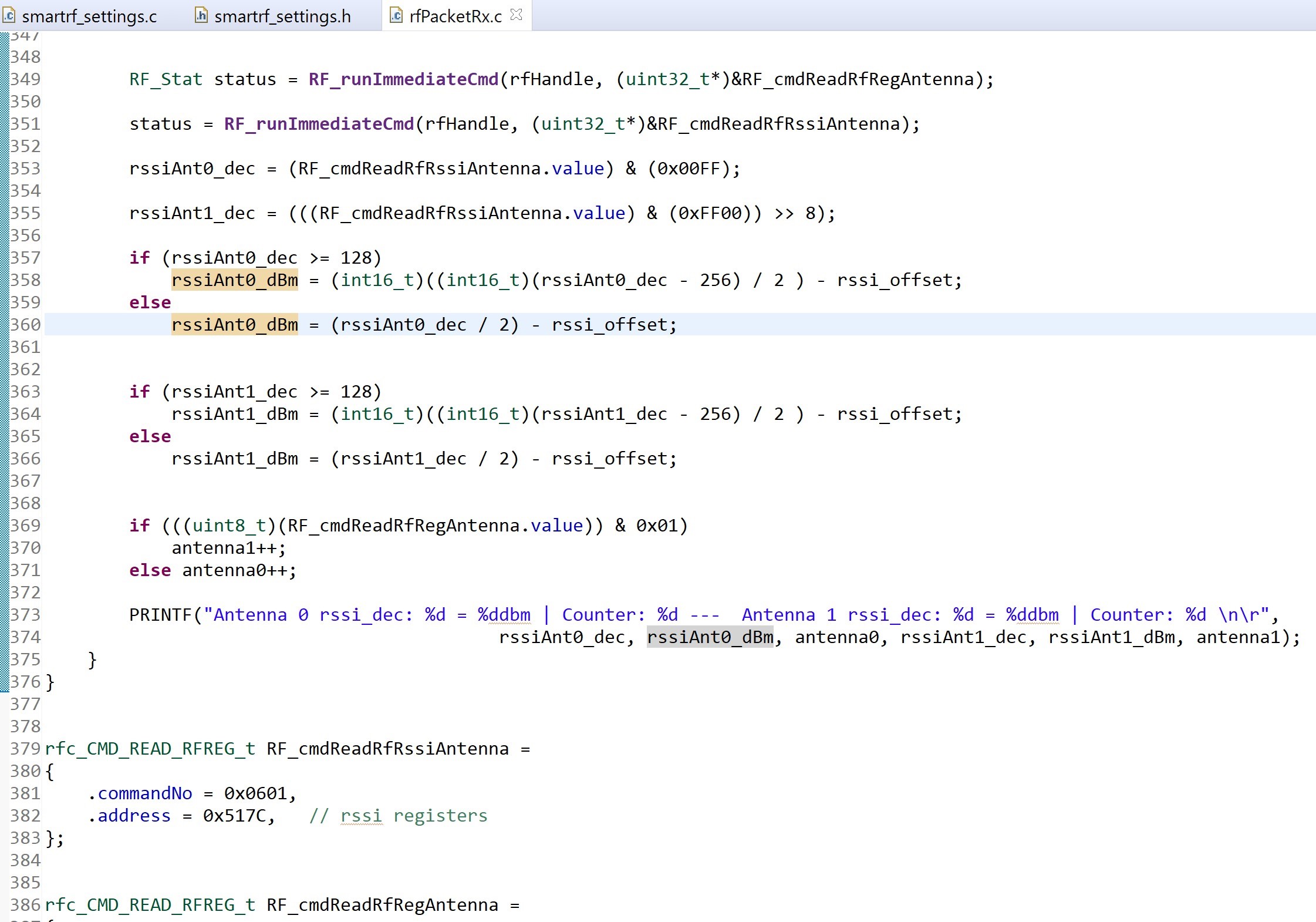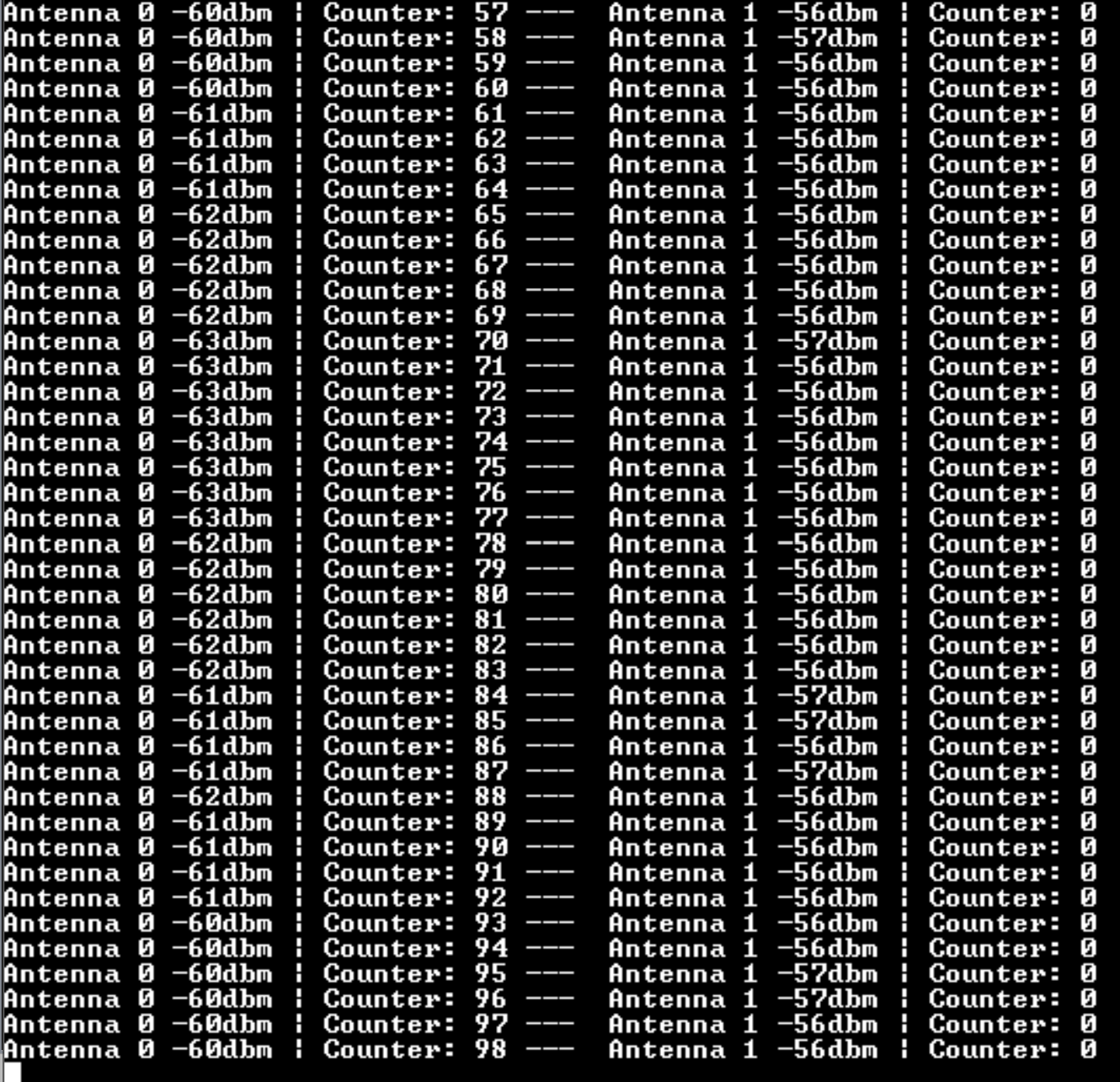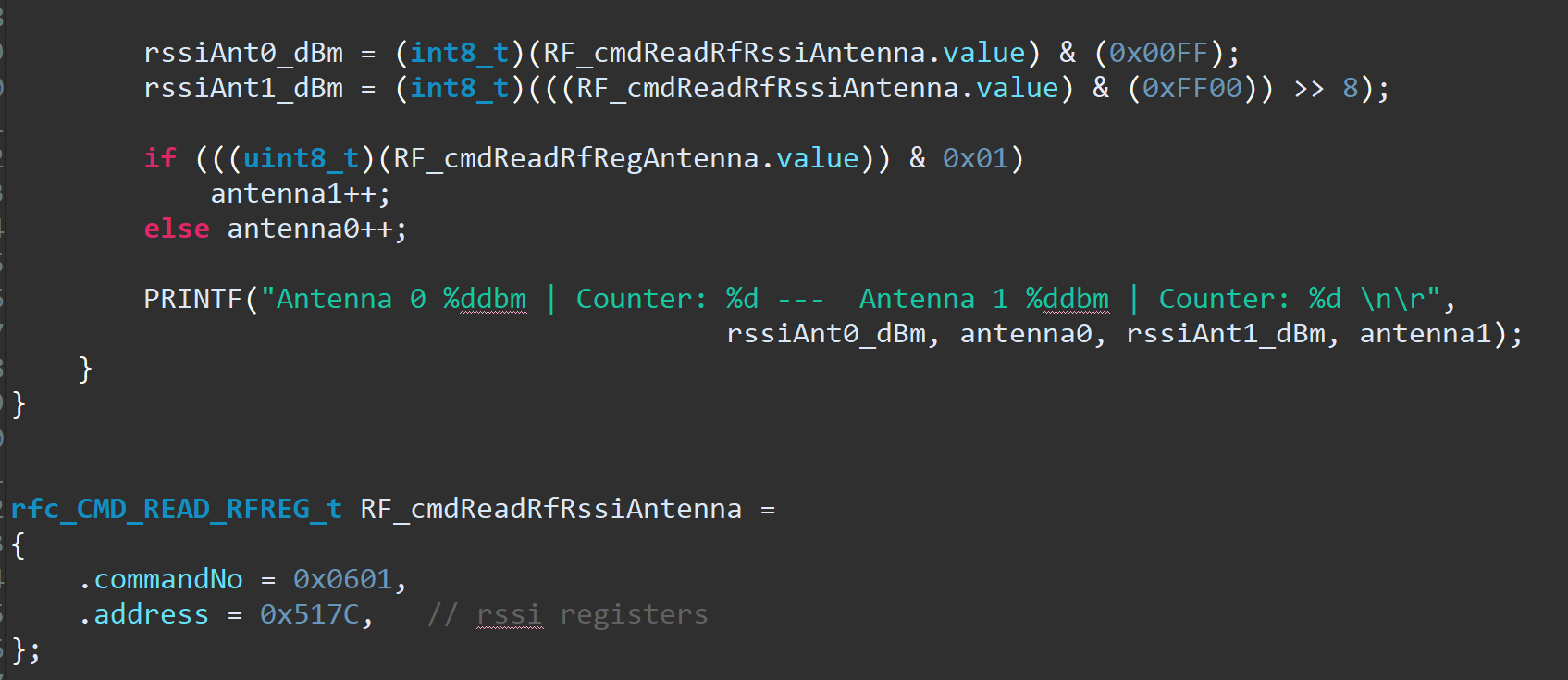Other Parts Discussed in Thread: CC1350
Tool/software: Code Composer Studio
Hi there,
I'm implementing Antenna Diversity in CC1350 based on http://www.ti.com/lit/an/swra523b/swra523b.pdf, and using SmartRF for Tx and PacketRx in CCS.
In addition, I'm reading RSSI values for each antenna using Register 0x4004 517C.
To convert those values do dBm, I'm using the code suggested in DN505, being:
if (rssi_dec >= 128) rssi_dBm = (INT16)((INT16)( rssi_dec - 256) / 2) - rssi_offset; // rssi_offset is set to 72 else rssi_dBm = (rssi_dec / 2) - rssi_offset;
The problem is that I'm getting strange values for RSSI, which are always below -100dBm event when Rx and Tx are close to each other.
It seems -100dBm (decimal 200) is the saturation value and it can't get better, as shows the image below taken from my terminal.
The part of code which reads, calculates and prints these values is:
I've tested Rx in more than one LP (including LPs with the default PCB antenna) and I got the same results.
Am I using the right equation/offset for RSSI?
Thank you,
Bruno




